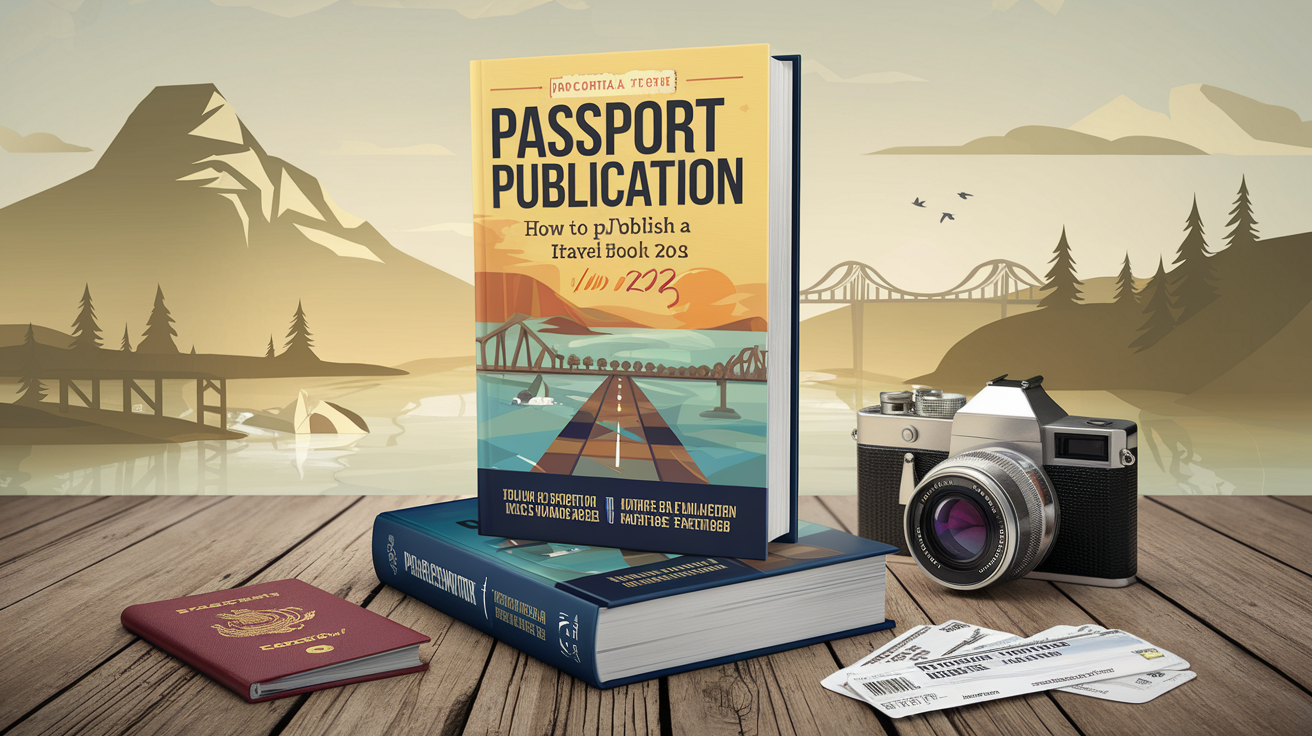Your Passport to Publication: How to Publish a Travel Book in 2025
Ever found yourself poring over a captivating travel memoir, feeling the pull of distant lands and the thrill of discovery?Or perhaps you've got a treasure trove of practical tips from your own adventures that youre itching to share with the world. The travel genre is more popular than ever, offering readers an escape, a guide, and a spark of inspiration. But how do you actually get your own travel tales from your personal journal or digital photos into a professionally published book that others can hold in their hands?It might seem like a daunting journey, but with the right roadmap, you can navigate the publishing world and share your unique perspective on the world.
The beauty of the travel genre is it's sheer diversity. You might be a seasoned backpacker with tales of navigating bustling souks, a culinary explorer documenting the world's most incredible street food, an armchair adventurer ready to share stunning photography from remote landscapes, or someone who found profound personal growth on a life-changing trip. Whatever your angle, your experiences are valuable. This guide is designed to be your compass, helping you understand the essential steps and considerations for bringing your travel book to life and sharing it with a global audience eager to explore.
Pinpointing Your Perfect Travel Niche

Before you even think about word count or cover design, the first crucial step is to hone in on your specific travel niche. The travel genre is vast, and a well-defined niche will make your book stand out from the crowd and attract the right readers. Are you focusing on budget backpacking through Southeast Asia, luxury train journeys across Europe, solo female travel safety tips, hiking the Appalachian Trail, or perhaps a deep dive into the cultural nuances of a specific city?Think about what makes your perspective unique and what kind of reader you want to attract.
Consider what kind of story you want to tell. Is it a chronological account of an epic journey, a collection of essays on different destinations, a practical guide to a specific region, or perhaps a photography-heavy showcase of natural wonders?Your niche should not only reflect your passion but also identify a gap or a unique angle in the existing market. Doing a little research on whats already out there can be incredibly helpful. See whats popular, but more importantly, identify whats missing.
Ultimately, your niche should be something you're genuinely excited to write about for an extended period. This isnt just a quick blog post; it's a book!Your enthusiasm will be contagious, and readers will connect with your authentic voice. Don't be afraid to get specific; a hyper-focused book often resonates more deeply with a dedicated audience than a broad, general overview.
Crafting a Narrative That Captures the Wanderlust

Once you have your niche, it's time to start thinking about the heart of your book: the storytelling. Travel writing isn't just about listing places you've been; it's about immersing your reader in the experience. You need to paint vivid pictures with your words, engaging all their senses. What did you see, hear, smell, taste, and feel?Transport your readers to that bustling market, that serene mountain peak, or that cozy cafe.
Beyond sensory details, a compelling travel book often has a strong narrative arc or a clear thematic throughline. Even if its a collection of essays, there should be a sense of purpose connecting them. Think about the emotional journey you went on. Did you overcome challenges?Did you have epiphanies?Did you connect with people in meaningful ways?These personal elements are what truly make travel writing relatable and engaging.
Remember that your voice is your brand. Are you funny and irreverent, or more reflective and contemplative?Are you an expert guide offering practical advice, or a storyteller weaving a personal adventure?Your unique voice will be what keeps readers turning pages, eager to experience the world through your eyes. Dont be afraid to let your personality shine through.
Navigating the Publishing Landscape: Options and Strategies
So, you've got your niche, you've started crafting your story, and now you're wondering how to get it into readers' hands. The publishing landscape offers several paths, each with it's own set of advantages and considerations. The traditional publishing route involves finding a literary agent, who then pitches your manuscript to publishing houses. This can lend significant credibility and offers professional editing, marketing, and distribution, but its also a highly competitive and often lengthy process.
Alternatively, you might consider independent publishing (or "indie publishing"). This route gives you complete creative control and a larger share of the royalties, but it also means youre responsible for every aspect of the process, from editing and cover design to marketing and distribution. This is where platforms like FastRead can be incredibly empowering, streamlining many of these technical aspects.
Theres also hybrid publishing, which blends elements of both. Regardless of the path you choose, professional editing is non-negotiable. A great travel book needs to be polished, error-free, and engagingly written. Likewise, a professional-looking cover is crucial for attracting readers in a crowded marketplace. Your book cover is often the first impression, and for a travel book, it needs to visually represent the essence of your journey and genre.
How FastRead Helps You Create Travel Content
Truth is, creating quality content used to take forever. But FastRead changes the game entirely. Whether you're writing about travel, technology, business, or any other topic, FastRead's AI handles the heavy lifting. Imagine getting your outline, initial drafts, and even cover concepts generated in a fraction of the time it would normally take. This means you can spend more time refining your unique voice, adding those personal anecdotes, and focusing on the creative storytelling that makes your travel book special.
FastRead understands that your travel experiences are personal and require a human touch. It acts as a powerful assistant, helping you build the structure, generate compelling descriptions, and even brainstorm chapter ideas. This frees you up to add your authentic experiences, your emotional insights, and the specific details that only you can provide. Its like having a dedicated research assistant and a co-writer whos available 24/7.
Book Genres FastRead Supports
FastRead works with tons of different genres:
Fiction: Science Fiction, Fantasy, Romance, Thriller, Mystery, Historical Fiction, Horror, Supernatural, and many more. Non-Fiction: Art & Photography, Autobiography, Biography, Cookbook, Diary, Dictionary, Encyclopedia, Essays, and many more.
Mastering the Art of the Travel Book Title
Your book title is your ultimate hook, your first invitation to the reader. For a travel book, it needs to be evocative, intriguing, and clearly indicate what kind of journey your reader is about to embark on. Think about titles that hint at adventure, discovery, or a specific experience. A great title can pique curiosity and make someone pick up your book over others on the shelf.
Consider your niche and your target audience when brainstorming titles. If you're writing a practical guide to hiking in Patagonia, a title like "Patagonia: A Hiker's Guide to the Southernmost Trails" might be straightforward and effective. If you're sharing a more personal memoir about finding yourself in Japan, something like "Whispers of Kyoto: A Journey of Self-Discovery" could be more appropriate.
Test out your potential titles. Say them out loud. Ask friends or potential readers which ones grab their attention the most. Sometimes a single, powerful word can be effective, while other times a more descriptive phrase works best. Ultimately, your title should be memorable, relevant, and enticing enough to make someone want to explore your world.
What's Your Next Step?
Ready to turn your travel dreams into a published book?The journey from inspiration to a physical book in your hands is achievable with careful planning and the right tools. Start by defining your unique travel niche, crafting a narrative that pulls readers into your experiences, and understanding the publishing options available to you. Don't let the technicalities overwhelm you; focus on the story you have to tell.
Ready to turn your ideas into a published book? Here's a tip: fastread can help you create professional content in hours, not months. With it's AI-powered capabilities, you can build your books structure, generate engaging prose, and even explore cover designs, allowing you to bring your travel stories to life faster than ever before. So, pack your virtual bags, fire up your imagination, and let's get your travel adventures published!